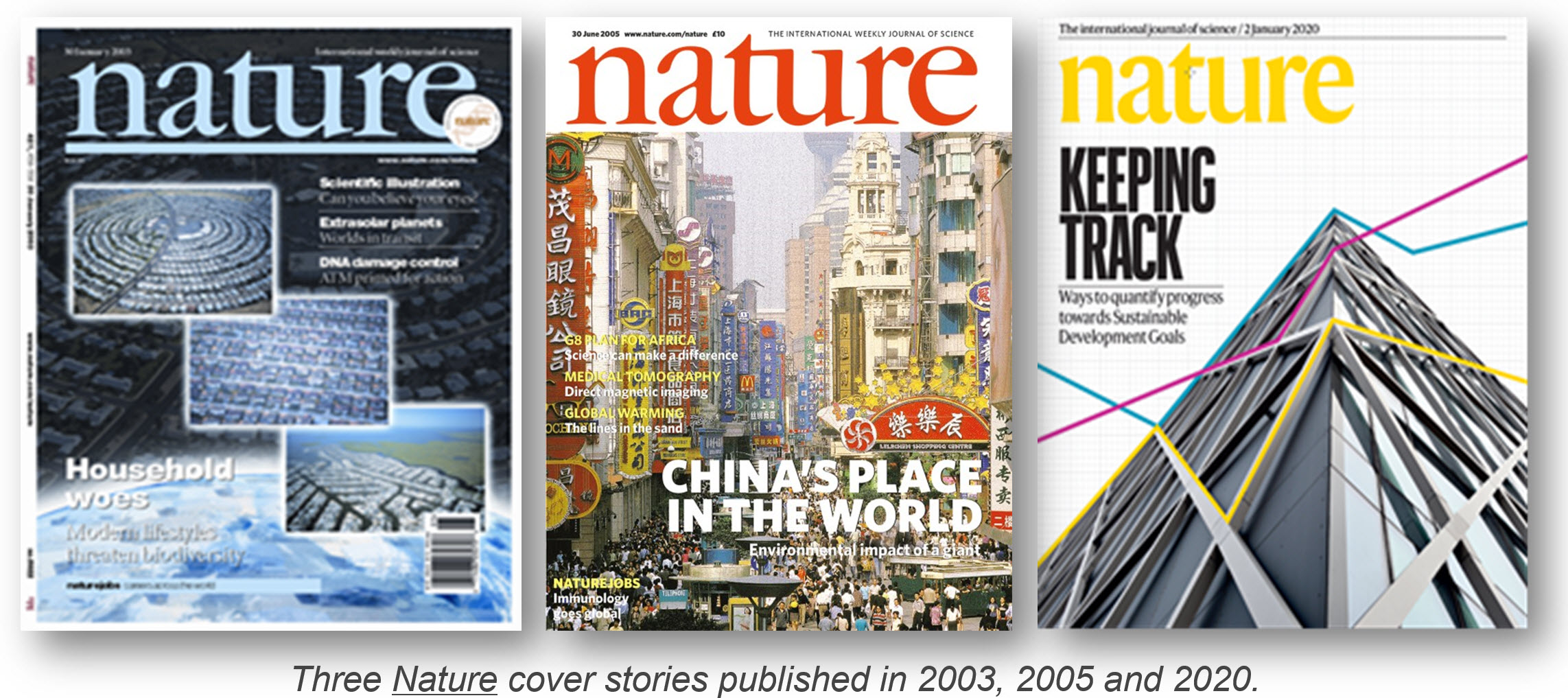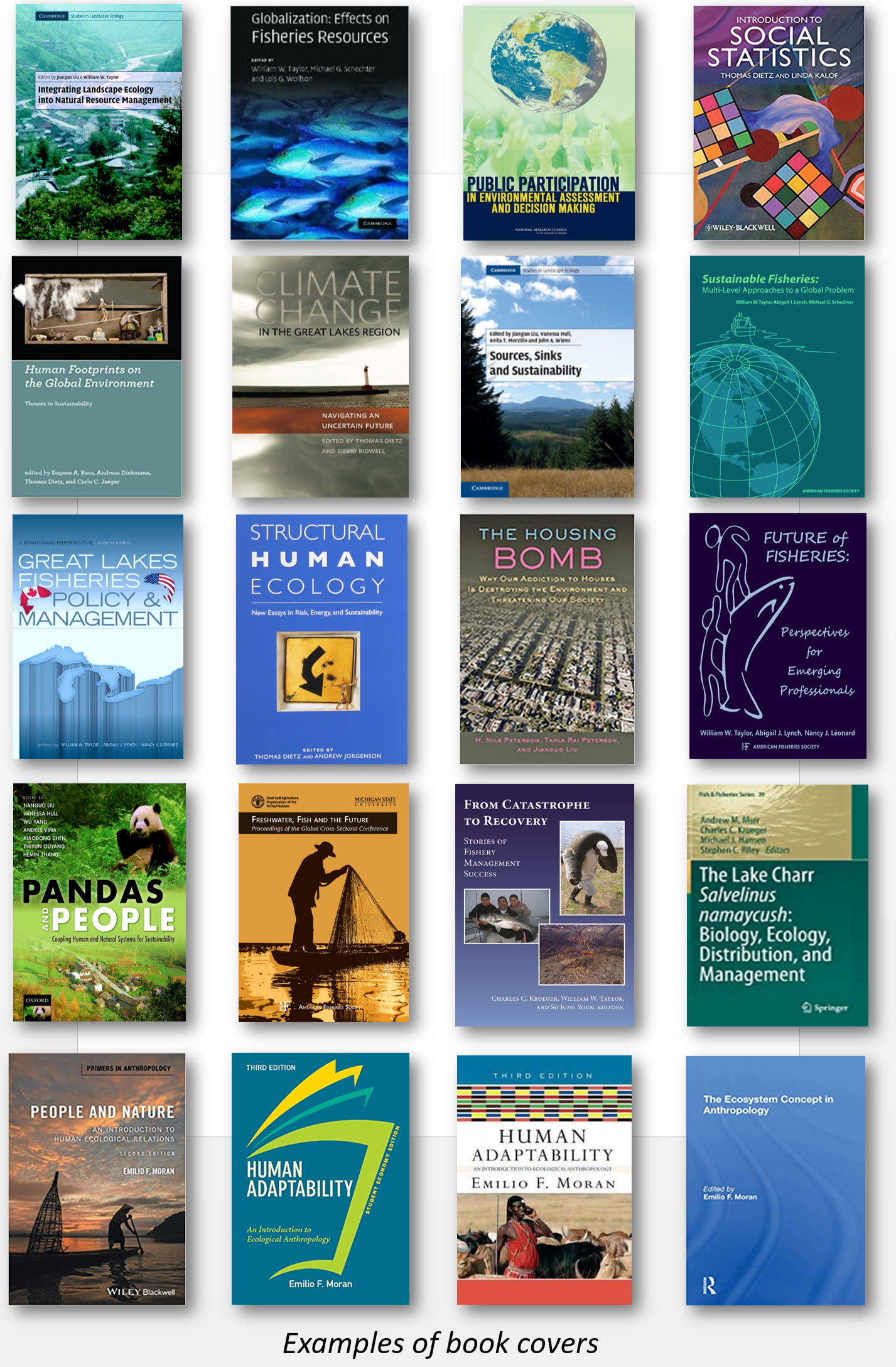Publications
Journal Articles
A list of journal articles published by CSIS members, including 3 cover stories in Nature, 24 appearances in Science, and 17 in PNAS (Proceedings of the National Academy of Sciences of the United States of America).
Books and Book Chapters
Selected books (edited books) and book chapters published by CSIS members.
Publications
-
SCIENCE -- A looming tragedy of the sand commons
Published on September 5, 2017
Between 1900 and 2010, the global volume of natural resources used in buildings and transport infrastructure increased 23 fold. Sand and gravel are the largest portion of these primary material inputs (79% or 28.6 Gigatons per year in 2010) -
Effects of biochar on dechlorination of hexachlorobenzene and the bacterial community in paddy soil
Published on August 31, 2017
This study investigated the effects of amending paddy soil with wheat straw biochar on both the dechlorination of hexachlorobenzene (HCB), a typical highly chlorinated contaminant, and on the structure of soil bacteria communities. -
Quantifying changes in water use and groundwater availability in a megacity using novel integrated systems modeling
Published on August 31, 2017
Water sustainability in megacities is a growing challenge with far-reaching effects. -
LAND -- The Sino-Brazilian Telecoupled Soybean System and Cascading Effects for the Exporting Country
Published on August 31, 2017
We use the telecoupling framework to analyze (i) the international trade dynamics between Brazil and China as the cause of the increased production of Brazilian soybean since 2000. -
Spatial Co-Occurrence and Activity Patterns of Mesocarnivores in the Temperate Forests of Southwest China
Published on August 15, 2017
Understanding the interactions between species and their coexistence mechanisms will help explain biodiversity maintenance and enable managers to make sound conservation decisions. -
Shared resources between giant panda and sympatric wild and domestic mammals
Published on August 15, 2017
In this paper, we systematically surveyed for species occurrence in the southwestern China during 2008–2013, to better understand the interactions between giant panda and four sympatric large mammal species. -
FISHERIES -- The telecoupling framework: an integrative tool for enhancing fisheries management
Published on August 12, 2017
Apply the telecoupling framework to better understand the impacts of local and more distant socioeconomic and environmental interactions that alter fisheries productivity. -
Science to action: decision-support to advance stream trout management in a changing climate
Published on August 12, 2017
Our research demonstrates the utility of synthesizing multiple information sources to facilitate efficient, effective decision-making amid complex fisheries management environments in a changing climate. -
Women rise to the challenges of fisheries conservation
Published on August 7, 2017
Sadler, Taylor, and Demmer raise their drinks and declare a toast, "To the new class of MSU Fly Gals; welcome to the Au Sable!" -
The Fenske Fellowship: professional growth, personal inspiration, and a fisheries legacy
Published on August 7, 2017
The Janice Lee Fenske Excellence in Fisheries Management Fellowship (Fenske Fellowship) honors Jan’s legacy by providing financial support for a fisheries student to engage in a rich university-agency mentoring experience in fisheries management. -
Range-wide evaluation of wildlife habitat change: A demonstration using Giant Pandas
Published on July 21, 2017
Information on wildlife habitat distribution and change is crucial for the design and evaluation of conservation efforts. -
Top 40 questions in coupled human and natural systems (CHANS) research
Published on June 30, 2017
Understanding and managing coupled human and natural systems (CHANS) is a central challenge of the 21st century, but more focus is needed to pursue the most important questions within this vast field given limited research capacity and funding. -
Hidden roles of protected areas in the conservation of biodiversity and ecosystem services
Published on June 26, 2017
Using field and remotely sensed data, we evaluated how representative of the plant biodiversity pool and of carbon sequestration is a network of nature reserves specifically established for the conservation of a target species, the giant panda. -
The contribution of lakes to global inland fisheries harvest
Published on June 26, 2017
Freshwater ecosystems provide numerous services for communities worldwide, including irrigation, hydropower, and municipal water; however, the services provided by inland fisheries... -
SCIENTIFIC REPORTS -- Climate variability and trends at a national scale
Published on June 12, 2017
Examining the daily minutia of climate, not just temperature, but also sunshine, precipitation and soil moisture simultaneously all over a country gives a better understanding of how variable a land’s climate can be. -
METHODS IN ECOLOGY AND EVOLUTION - Quantifying apart what belongs together: A multi-state species distribution modelling framework for species using distinct habitats
Published on June 9, 2017
Species distribution models (SDMs) have been used to inform scientists and conservationists about the status and change in occurrence patterns in threatened species. We address this issue by intro- ducing a multi-state SDM framework. -
Reply to Bridgewater and Babin: Need for a new protected area category for ecosystem services
Published on May 30, 2017
We thank Bridgewater and Babin for their perspective. We are aware of, and appreciate, the consideration of ecosystem services in the management of Biosphere Reserves. -
Modeling activity patterns of wildlife using time- series analysis
Published on May 30, 2017
The study of wildlife activity patterns is an effective approach to understanding fundamental ecological and evolutionary processes -
Tangible geospatial modeling for collaborative solutions to invasive species management
Published on March 28, 2017
Gaps between scientific theory and application have typically limited opportunities for model-based knowledge to reach the stakeholders responsible for problem-solving. To address this challenge, we introduce Tangible Landscape. -
Divergent responses of sympatric species to livestock encroachment at fine spatiotemporal scales
Published on March 21, 2017
Livestock are a major human-induced threat to wildlife worldwide, especially in forest landscapes where livestock degrade the food and habitat of forest-dwelling wildlife





 Print
Print Email
Email